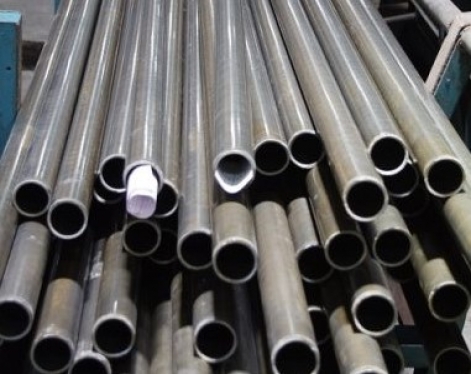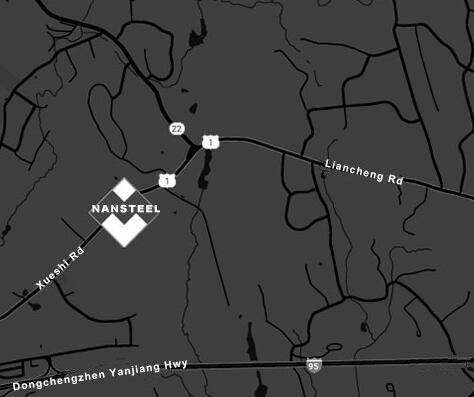Boiler tubes are an important component of the boiler system. Their quality and performance are directly related to the safe operation and efficiency of the boiler. Because boiler tubes are exposed to high temperature, high pressure, and corrosive environments for a long time, their materials will gradually age, wear, and corrode, which may eventually lead to failure. Therefore, formulating scientific and reasonable boiler tube scrapping standards is crucial to ensure the safe operation of boilers.
In industrial applications, boiler tubes can be manufactured using different processes, such as seamless pipe production for high-strength, uniform performance, or ERW pipe technology for cost-effective and efficient solutions. Understanding the differences in these pipe types also helps in determining inspection and scrapping standards. The following are the main standards and related contents for boiler tube scrapping:
1. Wall thickness reduction exceeds the standard
During the operation of boiler tubes, the tube wall will gradually become thinner due to factors such as high temperature, corrosion, and wear. When the wall thickness is reduced to a certain extent, the strength and pressure-bearing capacity of the pipeline will not meet the design requirements, and there is a risk of pipe burst. Generally, the scrapping criteria of boiler tubes are determined based on their original wall thickness and operating time. For example:
When the wall thickness decreases by more than 20% of the original wall thickness, it should be replaced.
For certain key areas, such as high-temperature or high-pressure areas, the steel must be scrapped if the wall thickness decreases by more than 10%.
2. Cracks and defects
During operation, boiler tubes may develop cracks due to thermal stress, mechanical stress, or material defects. The presence of cracks will significantly reduce the strength of the tubes and may cause tube bursts. The following situations require scrapping:
The surface crack depth exceeds 10% of the wall thickness.
Internal cracks or defects cannot be eliminated by repair.
The cracks expand rapidly, posing a safety hazard.
3. Severe corrosion
Boiler tubes are affected by water side corrosion, flue gas corrosion or chemical corrosion during operation. When the corrosion depth reaches a certain level, the strength and safety of the pipeline will no longer be guaranteed. The scrapping criteria include:
The corrosion depth exceeds 30% of the wall thickness.
The corroded area is large and performance cannot be restored through local repair.
Corrosion causes severe pitting or perforation on the pipe surface.

4. Deformation and bulging
Boiler tubes may deform or bulge under high temperature and high pressure, which is usually caused by local overheating or material aging. Deformation and bulging will reduce the strength and sealing of the pipeline and increase the risk of pipe burst. The following situations require scrapping:
The pipe deformation exceeds the design allowable range.
The bulge height exceeds 20% of the wall thickness.
Deformation or bulging may cause the pipeline to be unable to connect or operate normally.
5. Material aging
When boiler tubes are operated at high temperatures for a long time, the material will age, which is manifested as a decrease in hardness, toughness and changes in microstructure. Material aging will significantly reduce the pressure resistance and fatigue resistance of the pipeline. The scrapping standards include:
The hardness of the material decreases by more than 20% of its original value.
Severe intergranular corrosion or precipitation phase occurs in the microstructure.
The material toughness is significantly reduced and cannot meet the operating requirements.
The weld seams of boiler tubes are prone to defects such as pores, slag inclusions, and incomplete penetration. When weld seam defects are severe, the strength and sealing of the pipeline cannot be guaranteed. The following situations require scrapping:
Weld defects cannot be corrected by repair.
Cracks or corrosion appear in the weld area.
Weld strength is less than 80% of the design requirement.
7. Running time is too long
The service life of boiler tubes is usually determined by their material, operating environment and design parameters. When the operation time of the pipeline exceeds the design life, it should be considered scrapped even if there are no obvious defects on the surface. For example:
Carbon steel boiler tubes are generally designed for a lifespan of 10-15 years and require replacement after this period.
Alloy steel boiler tubes have a longer design lifespan, but their condition should still be uated after 20 years.
Conclusion
The scrapping standards for boiler tubes involve many aspects, including wall thickness reduction, cracks, corrosion, deformation, material aging, weld defects, operating time, etc. In actual operation, the pipeline status should be comprehensively uated in combination with the specific operating conditions and test results of the boiler to ensure safe and efficient operation of the boiler. At the same time, regular maintenance and inspection are important measures to extend the service life of boiler tubes and reduce the risk of scrapping.
Read more: International Standards for Boiler Tubes
In industrial applications, boiler tubes can be manufactured using different processes, such as seamless pipe production for high-strength, uniform performance, or ERW pipe technology for cost-effective and efficient solutions. Understanding the differences in these pipe types also helps in determining inspection and scrapping standards. The following are the main standards and related contents for boiler tube scrapping:
1. Wall thickness reduction exceeds the standard
During the operation of boiler tubes, the tube wall will gradually become thinner due to factors such as high temperature, corrosion, and wear. When the wall thickness is reduced to a certain extent, the strength and pressure-bearing capacity of the pipeline will not meet the design requirements, and there is a risk of pipe burst. Generally, the scrapping criteria of boiler tubes are determined based on their original wall thickness and operating time. For example:
When the wall thickness decreases by more than 20% of the original wall thickness, it should be replaced.
For certain key areas, such as high-temperature or high-pressure areas, the steel must be scrapped if the wall thickness decreases by more than 10%.
2. Cracks and defects
During operation, boiler tubes may develop cracks due to thermal stress, mechanical stress, or material defects. The presence of cracks will significantly reduce the strength of the tubes and may cause tube bursts. The following situations require scrapping:
The surface crack depth exceeds 10% of the wall thickness.
Internal cracks or defects cannot be eliminated by repair.
The cracks expand rapidly, posing a safety hazard.
3. Severe corrosion
Boiler tubes are affected by water side corrosion, flue gas corrosion or chemical corrosion during operation. When the corrosion depth reaches a certain level, the strength and safety of the pipeline will no longer be guaranteed. The scrapping criteria include:
The corrosion depth exceeds 30% of the wall thickness.
The corroded area is large and performance cannot be restored through local repair.
Corrosion causes severe pitting or perforation on the pipe surface.

4. Deformation and bulging
Boiler tubes may deform or bulge under high temperature and high pressure, which is usually caused by local overheating or material aging. Deformation and bulging will reduce the strength and sealing of the pipeline and increase the risk of pipe burst. The following situations require scrapping:
The pipe deformation exceeds the design allowable range.
The bulge height exceeds 20% of the wall thickness.
Deformation or bulging may cause the pipeline to be unable to connect or operate normally.
5. Material aging
When boiler tubes are operated at high temperatures for a long time, the material will age, which is manifested as a decrease in hardness, toughness and changes in microstructure. Material aging will significantly reduce the pressure resistance and fatigue resistance of the pipeline. The scrapping standards include:
The hardness of the material decreases by more than 20% of its original value.
Severe intergranular corrosion or precipitation phase occurs in the microstructure.
The material toughness is significantly reduced and cannot meet the operating requirements.
6. Weld defects
The weld seams of boiler tubes are prone to defects such as pores, slag inclusions, and incomplete penetration. When weld seam defects are severe, the strength and sealing of the pipeline cannot be guaranteed. The following situations require scrapping:
Weld defects cannot be corrected by repair.
Cracks or corrosion appear in the weld area.
Weld strength is less than 80% of the design requirement.
7. Running time is too long
The service life of boiler tubes is usually determined by their material, operating environment and design parameters. When the operation time of the pipeline exceeds the design life, it should be considered scrapped even if there are no obvious defects on the surface. For example:
Carbon steel boiler tubes are generally designed for a lifespan of 10-15 years and require replacement after this period.
Alloy steel boiler tubes have a longer design lifespan, but their condition should still be uated after 20 years.
Conclusion
The scrapping standards for boiler tubes involve many aspects, including wall thickness reduction, cracks, corrosion, deformation, material aging, weld defects, operating time, etc. In actual operation, the pipeline status should be comprehensively uated in combination with the specific operating conditions and test results of the boiler to ensure safe and efficient operation of the boiler. At the same time, regular maintenance and inspection are important measures to extend the service life of boiler tubes and reduce the risk of scrapping.
Read more: International Standards for Boiler Tubes









